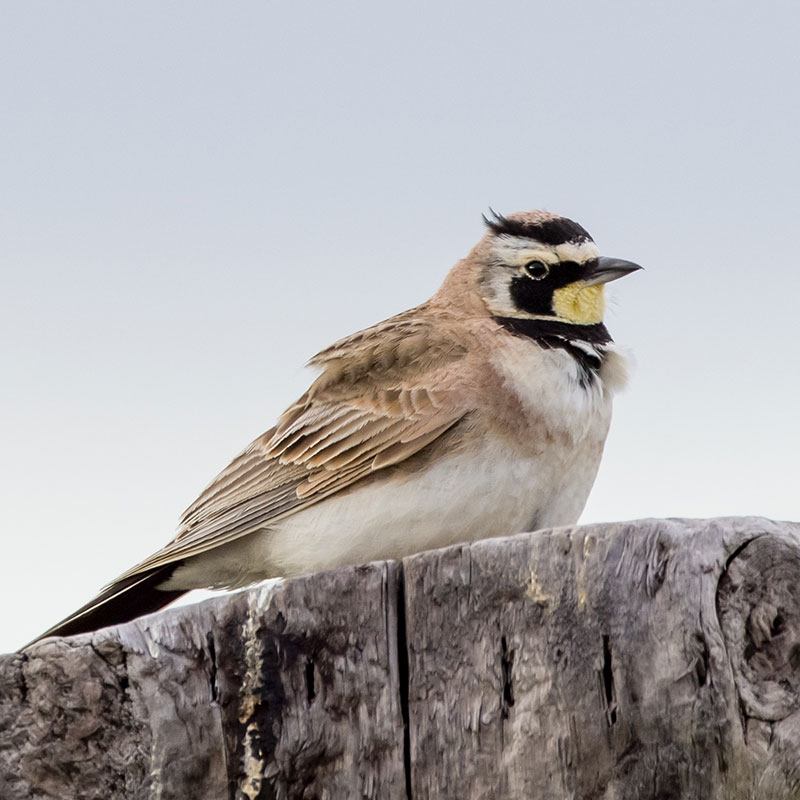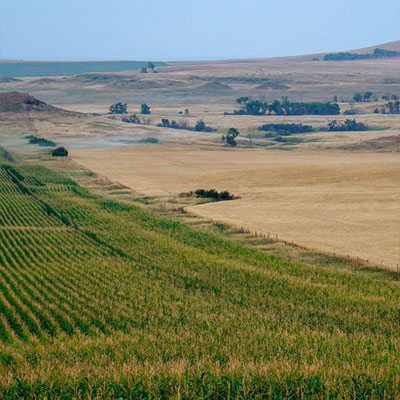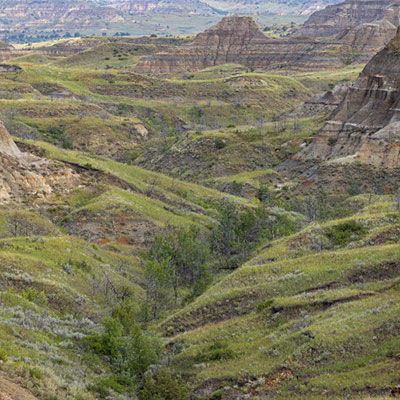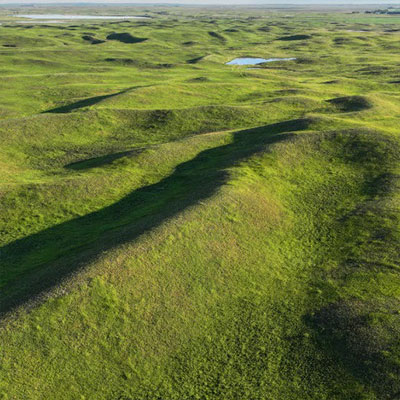Horned Lark

NDGF
Description/Identification: L 7.25”, WS 12”, 1.1 oz. Pale brown upperparts, white belly, dark breastband and dark feather tufts or “horns” that can be raised or lowered.
Status in North Dakota
Year-round, some migratory. Peak breeding season late March to mid-July.
Reason for SWAP Designation
At-risk based on expert review and recent global assessments (SGCN c.).
ND ranks 12th out of 37 states for highest percent of the global population (1.02%) during the breeding season (eBird).
The Horned Lark is declining, and the population has decreased 65% since 1970.
Threats
Loss of grassland.
Degradation of grasslands from invasive plants, woody encroachment, succession, and loss of diversity.
Loss of ranching heritage and grass-based operations, grazing is essential to grassland health and diversity.
Woodland encroachment and planting trees in or near edges of grasslands.
Increasing applications of agrochemicals and possible exposure causing pesticide acute toxicity.
Mortality from collisions with wind turbines and other tall structures.
Research and Monitoring
Habitat requirements, demographic studies, and effects of management practices such as grazing, burning and haying have been broadly researched on the breeding grounds.
Additional information is needed on migration and wintering behaviors.
The Breeding Bird Survey, eBird and Partners in Flight Databases are key sources of information on distribution and population trends.
Management Recommendations
- Protect and conserve large, intact tracks of native prairie/unbroken grassland and tame grassland.
- Reconstruct or restore grassland adjacent to existing tracts of native prairie/unbroken grassland.
- Use native grasses when replanting or restoring grassland.
- Graze or hay expired CRP. The density of Horned Larks is higher in cropland than CRP, but density will increase if expired CRP is converted to grazed grassland (+65%) or hayland (+67%).
- Promote well-managed grazing lands and working grasslands for biodiversity, sustainability, and resiliency.
- Burning has a positive short-term (1-3 years post-burn) response by Horned Larks.
- Prevent or remove shrubs and tall woody vegetation in grasslands, either mechanically or by prescribed fire.
- Delay mowing or haying until August 1.
- Conscientious and appropriate application of agrochemicals.
- Follow beneficial or best practices during the design, siting, construction, operation, and maintenance of tall structures (e.g. transmission lines, communication towers, wind turbines).





